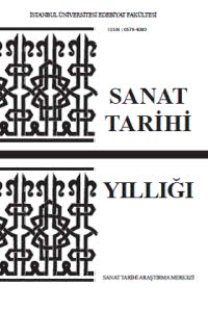Gaziantep Arkeoloji Müzesi‘nde Bulunan Yayımlanmamış Kurşun Mühürlerden Bir Seçki: Devlet Görevlileri Tarafından Darp Edilmiş Olanlar
Kurşun mühür, Gaziantep, devlet görevlileri, Bizans mühürleri, sicilografi
A Selection of Unpublished Lead Seals from the Gaziantep Archeological Museum: Seals Issued by State Officials
Lead Seal, Gaziantep, state officials, Byzantine seals, sigillography,
___
- Cheynet, J.Cl., “Sceaux byzantins des musees d’Antioche et Tarse”, Travaux et Memoirs, 12, 1994, pp. 391-478.
- Cheynet, J.Cl., “Les sceaux byzantins du musee de Manisa”, Revue des Etudes Byzantines, 56, 1998, pp. 261-267.
- Cheynet, J.Cl., “Les sceaux de a collection Khoury”, Revue de Numismatique, 159, 2003, pp. 419-456.
- Cheynet, J.Cl. – D. Theodoridis, Sceaux Byzantins De La Collection D. Theodoridis, Les sceaux patronymiques, CNRS, Monographies 33, Paris, 2010.
- Cheynet, J.Cl. – E. Erdoğan – V. Prigent, “Les Sceaux Byzantins du Musee d’Adıyaman”, Studies in Byzantine Sigillography, 12, (Ed. J.Cl. Cheynet and C. Sode), De Gruyter, 2016, pp. 93-140.
- Cheynet, J.Cl. – E. Erdoğan – V. Prigent, “Sceaux des Musees de la Turquie Orientale: Karaman, Nevsehir, Malatya, Maras”, Revue des Etudes Byzantines, 74, 2016, pp. 287- 326.
- Cheynet, J.Cl. – M. Campagnolo-Pothiou, Sceaux de la Collection George Zacos au Museee d’Art et d’Historie de Geneve, Milan, 2016.
- Grünbart, M., “Die Familie Apokapes im Lichte neuer Quellen”, Studies in Byzantine Sigillography 5, 1998, pp. 29-42.
- Jordanov, I., Corpus of Byzantine Seals From Bulgaria, Volumes 1-3, Sofia, 2003.
- Konstantinopoulos, K.M., Byzantiaka Molydouboulla tou en Athenais Ethnikou Nomismatikou Mouseiou, Athens, 1917.
- Michael Attaleiates, The History, translated by Anthony Kaldelis and Dimitris Krallis, Dumbarton Oaks Medieval Library 16, 2012.
- Münz-Zentrum, Auktion 68, (25-27 April 1990).
- Polemis, D.I., The Doukai: A Contribution to Byzantine Prosopography, Athlone, California, 1968.
- The Alexiad of Anna Komnena, translated by E.R.A Sewter, Penguin Books, London, 1969.
- Seibt, W., Die Byzantinischen Bleisiegel in Österreich, Teil.1, Vienna, 1978.
- Seibt, W. – M.L. Zarnitz, Das Byzantinische Bleisiegel als Kunstwerk, Vienna, 1997.
- Sode, C., Byzantinische Bleisiegel in Berlin, II, Bonn, 1997.
- Wassiliou, A.K. – W. Seibt, Die byzantinischen Bleisiegel in Österreich, 2, Zentral-und Provinzialverwaltung, Österreichische Akademie der Wissenschaften, Vienna, 2004.
- Wassiliou, A.K., “Siegel in Kopie und Falschung”, Kopie und Falschung, Ed. by Christian Gastgeber, Graz, 2001, pp.125-152.
- http://doaks.org/resources/seals (Online Catalogue of Byzantine Seals from Dumbarton Oaks Collection)
- http://blog.pbw.cch.kcl.ac.uk/contact/ (Prosopography of the Byzantine World)
- http://www.metropolitan.org/art/collection/search/466046
- http://www.perseus.tufts.edu/hopper/
- ISSN: 0579-4080
- Yayın Aralığı: 1
- Başlangıç: 1964
- Yayıncı: İstanbul Üniversitesi
Bizans Devrinde Caddebostan Ruphinianus (Drys)
Niksar Melik Danişmend Gazi Türbesi Haziresi’nde Tespit Edilen Sırlı Tuğla Şahide
Onarımın Tarihi Görsellerden Okunması: Bursa Orhan Camisi Örneği
Arkeoloji Delikanlısını Yitirdi: A. Muhibbe Darga (1921 - 2018)
Türk El Sanatları’na ve Türk Sanatı Tarihi’ne Adanmış Bir Kalp: Prof. Dr. Örcün Barışta (1942-2017)
Mimar Sinan Camilerinde Sembolizm Üzerine Bir Değerlendirme
